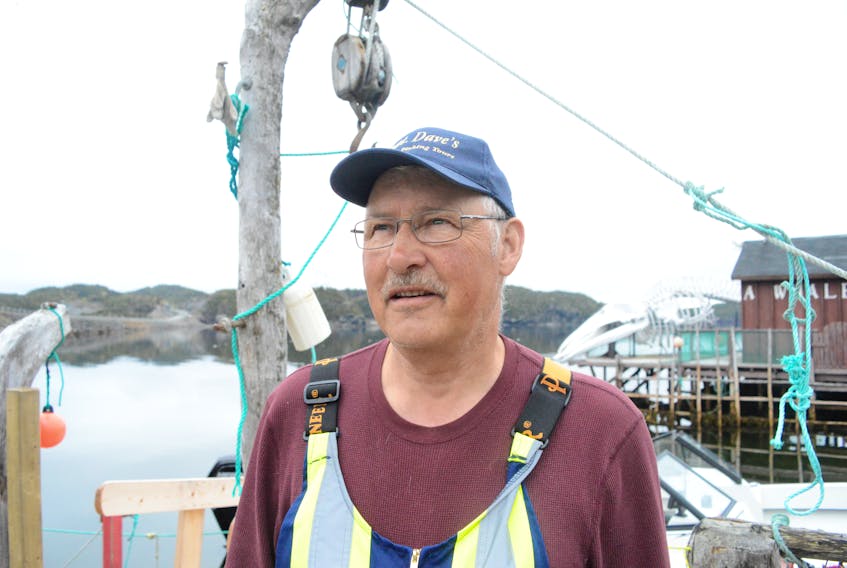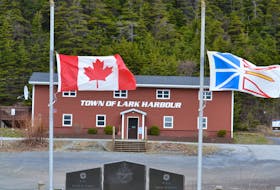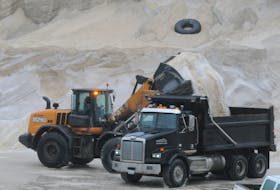Part two in a two-part series
Find part one of the series here
The Prime Berth Fishing Heritage Centre, the first structure past the causeway into Twillingate Island, is run by owner and harvester David Boyd.

While historically the fishery was the economic foundation for communities like Twillingate, its dominance has diminished greatly and it’s since been replaced by new profitable industries like tourism. Boyd’s business serves both as a prominent tourism operation and a reminder of the definitive role fishing played in the province’s history.
But since the mass layoffs wrought by the cod moratorium and the professionalization of the fishery that came afterward, Boyd says the connection to the water has been largely severed for younger generations.
“Growing up in the ’50s and ’60s there was never any question as to the rights of youngsters to jump into fishing boats with their parents, whether it be seal hunting, hauling cod traps or squid jigging in the fall,” said Boyd. “All that changed after the devastation of the greatest resource in the world – the northern cod stocks.”
In 1997, five years after the moratorium, the Professional Fish Harvesters Certification Board was established. With it came new criteria for eligibility that remains in place today.
A level I certification with the board gives harvesters the ability to be a designated vessel operator, and a level II certification makes the harvester eligible to receive a federal species licence. To reach this certification, the person must complete all necessary safety and navigation courses, have five years of full-time work on a fishing vessel, and not hold a full-time position outside of the fishery.
Executive director with the board, Mark Dolomount, says the organization’s purpose is not to restrict access to the industry, but to ensure a standard of professionalism and protect the owner/operator policy unique to the region’s inshore fishery.
“The biggest impediment to getting these core enterprises is not this board. Level II certification is actually ensuring these valuable licences are kept extremely valuable,” Dolomount said.
“One of the goals is to see the licences in Atlantic Canada remain in the hands of independent owner/operators, not to corporations or processing companies.
“What this board does in many ways is lock up this owner/operator policy. It ensures that people have the experience and commitment to make it in this industry.”
Qualifications and experience

“It’s something I’ve heard all over the coast. It’s more than urgent, it’s hit crisis,” Cleary said. “By far, the difficulty with getting into the fishery is the number one issue on all coasts.
“We do need a professionalization board but the criteria is too strict. We’ve written to Minister (of Fisheries and Land Resources) Gerry Byrne that it needs a review and total overhaul.”
In many meetings across the province, Cleary says the automatic disqualification when holding full-time work outside the fishery is one main area of contention.
“You’ve got to practically starve yourself for five years as a full-time crew member,” he said. “In the small boat fleet you’re making only $10-15,000 a year.”
Dolomount stresses this rule specifically applies to the five-month fishing period between May and October, and that full-time work outside of that period does not disqualify a person from certification.
“In that five months you’re given a 30-day grace period, so it’s really only four months of the year you have to get 70 per cent of your income from fishing,” said Dolomount. “When the fishing season is over, and you want to go to work in Fort McMurray or at anything from November to the following April, that’s fine. We encourage it.”
This five years’ required experience can only begin when the person is 16, but Dolomount says there is a prior learning assessment offered when the person begins their in-class training.
“If, in the assessment, it’s determined the person has hands-on experience in fish handling, navigation, diesel engine maintenance – there is an ability to get credits for that,” he said.

The monetary obstacle
From harvesters, union representatives, advocates, and onward, the massive financial investment tied to owning a fishing enterprise is agreed upon as the largest obstacle to bringing new faces into the industry.
Kimberly Orren with Fishing for Success says it’s important that the value of these enterprises remain for those who are ready to sell, but the provincial and federal government need to look into financial assistance for those on the buying end.
“Right now you have one side of the coin of people looking to sell off their enterprise as their retirement package, but the flip side of that coin is young people looking at the price of these enterprises and saying that’s a house, car and university degree all rolled into one,” she said.
According to Dolomount, there is a fisheries loan guarantee program people can access where the provincial government will back a loan. For a young harvester facing a six-figure investment, banks may not offer assistance otherwise.
Fish, Food and Allied Workers-Unifor (FFAW-Unifor) union president Keith Sullivan says their main focus in helping people enter the industry is ensuring stronger incomes.
Between 2000 and 2015, the average annual income of a self-employed harvester in the province went from $26,117 to $53,773.
“Our main goal is to increase the income of harvesters,” said Sullivan. “You need a good income attached to these enterprises to attract new buyers.”
Sullivan sees the push for better quotas as another area that can encourage fishers to make that core enterprise investment.
“This is a tough business at the best of times, but where there are species abundancies we need the Department of Fisheries and Oceans to allow reasonable fisheries to take place,” he said. “With northern cod we have biomass that’s come up to 40,000 metric tonnes and we’re fishing less than two per cent of that.
“That’s a prime example where there’s excellent opportunities for people but it’s severely hampered because management is not reasonable.”
Orren says a smaller scale fishery could also be a good incentive to peak the next generation’s interest, without overbearing them on large-scale investments.
“If we had a youth or intern fishery, like a handline fishery within three miles of shore, it would require a much lower set of experience and qualifications,” said Orren. “That could be a kind of starter fishery to get people a feel for things and earn a bit of money.”
Complex and ever-changing
As the aging demographics reflect a growing need for new hands to hoist the sails, many new challenges await an industry already plagued with uncertainties.
Fishing brought great prosperity since the earliest days of colonization and also great defeat with the depletion of cod and most recently of shrimp. Like the rough seas of the Atlantic, fishing is a complex and ever-changing industry the people of Newfoundland and Labrador have battled with time and again.
For many, it’s impossible to see a future in this province without it.
“We must encourage young people to get into boats, to build in their hearts and souls a love for fishing as we had for hundreds of years,” said Boyd.
“When the last light goes out in our fishing villages, as Newfoundlanders, we will have lost that which has defined us as a people for centuries.”
A definitive future
According to figures gathered from the Professional Fish Harvesters Certification Board, in 2018 the average age of new entrants into the province’s fishery was 37.
As well, there are nearly 1,000 people currently in possession of a level II certification under the age of 45. However, in total there are about 2,400 people with level II certification that do not currently own an enterprise.
Mark Dolomount, the board’s executive director, maintains there is still a definitive future for Newfoundland and Labrador’s fishery, and the numbers reflect that.
“It’s difficult with lower quotas to incentivize people, but we know there’s a future in fishing. Just look at the many lobby groups in Ottawa trying to end the owner/operator policy,” he said.
“There is opportunity and if you’re committed there is money to be made. To keep money in local communities that policy needs to remain in place.”
More focus needed on youth
Port de Graves harvester Stephanie Lights says the schooling aspect to certification is very important, but a decrease in the five-year limit for experience could be a positive encouragement for the industry.
As well, Lights says an increased focus in the province’s public schools is needed.
“There should be more help and knowledge offered,” she said.
“You see these job fairs at school, but you rarely see the booth for people who want to fish when they grow up. If we have this professional outlook for harvesters, it should be something that’s promoted as a career option.”
Fish, Food and Allied Workers-Unifor (FFAW-Unifor) union president Keith Sullivan agrees the push to promote the industry in the province’s high schools will likely be a growing concern as more and more of their representatives approach retirement.
“It’s fair to say it’s going to require more focus, with an aging population, that generational change will need more attention,” Sullivan said.









